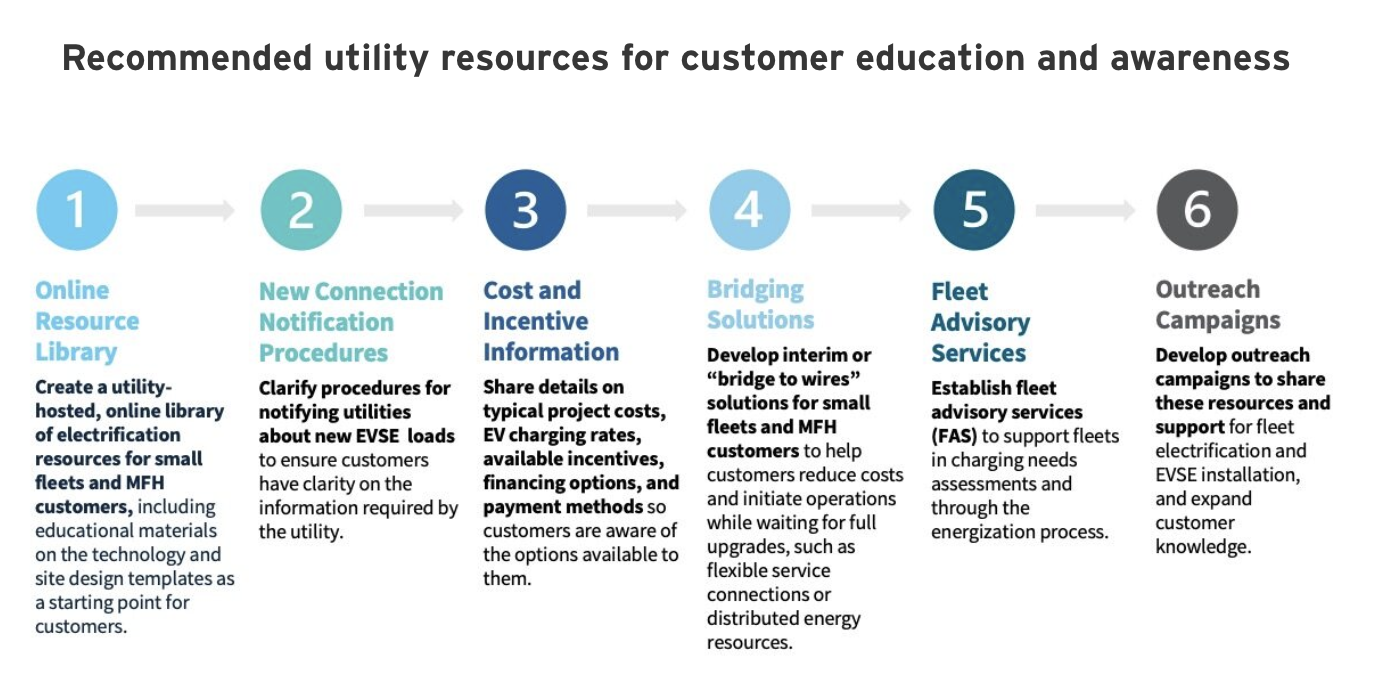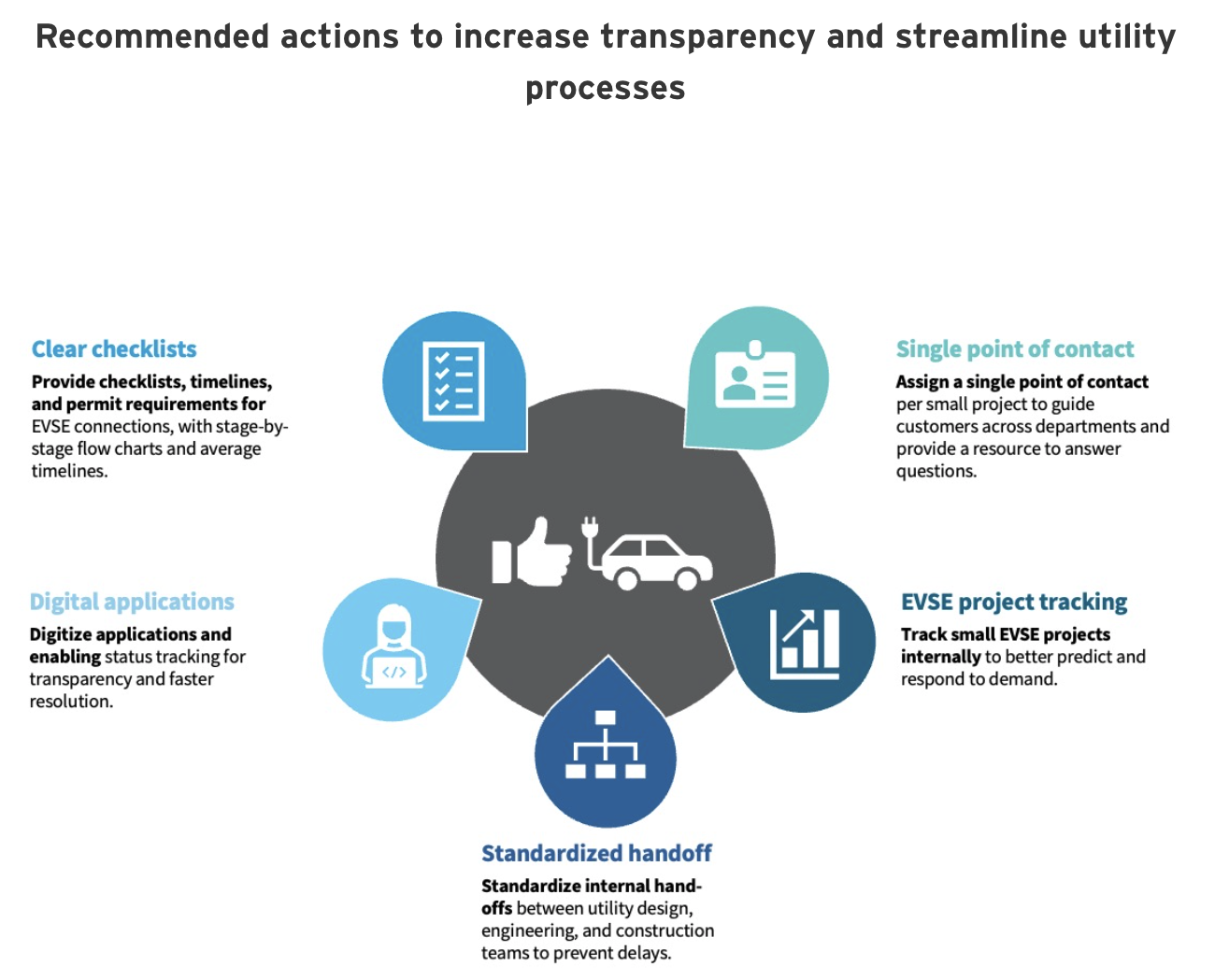Assist CleanTechnica’s work by a Substack subscription or on Stripe.
4 steps to streamline electrical service connections for small EV clients.
By Aradhana Gahlaut, Bryn Grunwald
International electrical automobile (EV) gross sales have grown quickly over the previous 5 years, rising almost 500 p.c between 2020 and 2024. And in the US, regardless of a slowdown resulting from adjustments in federal coverage, EV gross sales are nonetheless projected to rise by about 2.5 million from 2025 to 2030. This continued momentum underscores the necessity for widespread and dependable entry to charging infrastructure. And whereas stakeholders are actively creating new packages to handle this, an often-overlooked group of EV adopters — small fleet operators and residents of multi-family housing (MFH) — nonetheless face disproportionate and distinctive challenges in connecting to the electrical grid. Delays, sudden improve prices, and different obstacles, reminiscent of buyer unpreparedness, can gradual initiatives, hinder electrification efforts, and restrict entry to scrub transportation choices.
To handle this, RMI in collaboration with the Electrical Energy Analysis Institute (EPRI), the Interstate Renewable Vitality Council (IREC), Alliance for Transportation Electrification (ATE), and ten Clear Cities and Communities companions created a roadmap for streamlined grid service connections for these small EV clients. The roadmap, knowledgeable by a wants evaluation primarily based on real-world buyer and utility experiences, gives actionable options to handle these challenges and clarifies who — utilities, cities, or regulators — is finest positioned to implement every answer to make sure no buyer is left behind within the EV transition.
The problem: Why small clients wrestle with energization
For smaller EV charging clients, reminiscent of house constructing homeowners and renters, in addition to native companies and supply fleets, the electrical service connection course of could be complicated, time-consuming, and dear. These hurdles could lead fleet and property homeowners/managers to desert EV charging plans — regardless of tenant requests or native coverage motivations. For each teams, one misstep within the course of may end up in months-long delays and finances overruns.

The results: Excessive prices and lengthy timelines
In contrast to a constructing building venture, buying EVs and chargers is significantly faster than connecting to the electrical grid. For a constructing, the utility has a for much longer lead time to arrange for connections and upgrades, whereas with EV initiatives, clients want their charging stations energized inside weeks. These EV service connection timelines could be exacerbated by the necessity for giant grid upgrades and/or advanced allowing. Relatedly, venture prices are sometimes unpredictable and might escalate as a result of want for trenching or civil building work, panel upgrades, and new transformers, in addition to help for acquiring permits and easement approvals, a few of which could be amplified by an absence of funding and buyer incentive packages. These components create disproportionate burdens for smaller clients who usually lack consciousness of the energization course of and in-house experience, in addition to each financial and human capital. With out clear steerage, they could overbuild, underestimate prices, or surrender altogether.
Options and roles: Making connections simpler for small clients
These challenges underscore the necessity to streamline service connections and supply associated help, thereby making electrification simpler for small clients. These actions could also be led by utilities; nevertheless, many require collaboration with stakeholders starting from the shoppers themselves to contractors, tools suppliers, and native authorities. Under, we spotlight a few of the key options developed within the Roadmap.
1. Creating Buyer Sources and Serving to Them Plan Smarter
Small clients usually lack entry to important data and academic assets, reminiscent of submission tips, web site design templates, pattern prices, and bridging options. Utilities can fill this hole by offering these instruments and partnering with native governments, clear cities coalitions, and neighborhood organizations to share these assets.
To make the method extra accessible, utilities can host webinars, share data on-line, provide translation companies, create standardized templates, join clients to funding alternatives, and develop clear, user-friendly content material. Offering this help early empowers clients to pick the best infrastructure, streamline the energization course of, and work extra successfully with utilities.

2. Growing Transparency and Streamlining Utility Processes
Streamlining utility processes and rising total transparency would considerably enhance the EVSE set up and energization expertise for a lot of small clients. Present processes usually really feel overly difficult and unclear, which might improve prices and total time, requiring a number of back-and-forth communications between the shopper and the utility. Utilities can take proactive measures to enhance the connection expertise, offering transparency and a clearer understanding of the method for purchasers whereas additionally streamlining the method internally.

3. Collaborating with Native Authorities and Business
The onus for enhancing this course of doesn’t fall solely on the utility; collaboration with the native authorities or Authorities Having Jurisdiction (AHJs) and business will also be useful. These efforts can help workforce growth, creating expert EV technicians and new job alternatives. Partnerships with native unions, neighborhood faculties, and vocational packages may also help guarantee a adequate labor power for EVSE set up and upkeep. Key methods embrace:
- Standardizing allow necessities throughout municipalities, significantly for small initiatives, utilizing a instrument reminiscent of SolarAPP, which helps expedite allowing for residential photo voltaic functions.
- Coaching constructing inspectors and allowing officers on EVSE processes and eradicating obstacles to cost set up in communities (e.g., by way of participation within the Charging Good program).
- Providing utility-led permit-submission companies on behalf of small clients, developed in session with AHJs.
- Together with pre-approved easement language accepted by AHJs in tariffs or normal service agreements to keep away from authorized delays.
- Selling pre-designated EV zones in metropolis growth plans to hurry connections.
- Conducting load forecasting utilizing electrification venture objectives and knowledge from native governments and the neighborhood, and publishing internet hosting capability maps to determine out there capability for load connection.
- Creating native electrician and tools supplier directories to assist small clients discover certified contractors and suppliers.
- Sponsoring workforce packages and partnering with vocational faculties, particularly in deprived areas. Utilities and native governments may sponsor Electrical Automobile Infrastructure Coaching Program (EVITP) certifications for his or her workforce, targeted on EVSE installations.
- Sharing regional demand forecasts between companions to align workforce growth plans and program growth with projected wants primarily based on EV adoption.
By implementing these measures collaboratively, utilities, native governments, and business can streamline EV adoption, cut back administrative obstacles, and domesticate a neighborhood expert workforce able to help rising EV infrastructure.
4. Sustaining Buyer Relationships After Energization
One other vital a part of the method is conducting post-energization follow-ups and sustaining a relationship with the shopper to make sure all the pieces is working as anticipated. It will assist determine points and facilitate case research and factors for enchancment within the course of.
A few of these objects might embrace providing primary upkeep help assets and coordination with third-party installers to take care of service continuity. The utility might additionally comply with as much as encourage participation in managed charging or demand response packages, share new funding or fee choices, or acquire knowledge to help steady enchancment.
Guaranteeing Everybody Has Entry to an Electrified Future
The transition to electrical transportation is properly underway, however until we handle the distinctive challenges going through small EV clients, many might be left behind.
The excellent news? We already know what works. Implementing a focused mixture of buyer training, streamlined utility processes, versatile financing choices, and interagency collaboration on allowing points can considerably cut back venture prices and timelines for small clients.
Utilities, native governments, and regulators every have a essential function to play. Whether or not it’s launching fleet advisory companies, simplifying allow approvals, or increasing funding, these actions will be certain that each neighborhood — no matter measurement or earnings — can take part within the EV revolution.
Let’s make sure the EV future isn’t just quick and clear, but additionally accessible to all.
Obtain the Roadmap to study extra.
Article from RMI.

Join CleanTechnica’s Weekly Substack for Zach and Scott’s in-depth analyses and excessive stage summaries, join our each day publication, and comply with us on Google Information!
Have a tip for CleanTechnica? Wish to promote? Wish to recommend a visitor for our CleanTech Discuss podcast? Contact us right here.
Join our each day publication for 15 new cleantech tales a day. Or join our weekly one on prime tales of the week if each day is just too frequent.
CleanTechnica makes use of affiliate hyperlinks. See our coverage right here.
CleanTechnica’s Remark Coverage
